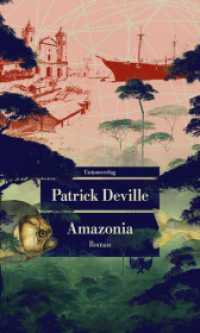- ホーム
- > 洋書
- > 英文書
- > Science / Mathematics
Full Description
This textbook provides an accessible introduction to quantum field theory and the Standard Model of particle physics. It adopts a distinctive pedagogical approach with clear, intuitive explanations to complement the mathematical exposition. The book begins with basic principles of quantum field theory, relating them to quantum mechanics, classical field theory, and statistical mechanics, before building towards a detailed description of the Standard Model. Its concepts and components are introduced step by step, and their dynamical roles and interactions are gradually established. Advanced topics of current research are woven into the discussion and key chapters address physics beyond the Standard Model, covering subjects such as axions, technicolor, and Grand Unified Theories. This book is ideal for graduate courses and as a reference and inspiration for experienced researchers. Additional material is provided in appendices, while numerous end-of-chapter problems and quick questions reinforce the understanding and prepare students for their own research.
Contents
Preface; Part I. Quantum Field Theory: Ouverture: concepts of quantum field theory; 1. Basics of quantum field theory; 2. Scalar field theory and canonical quantization; 3. From particles to wavicles and back; 4. Perturbative scalar field functional integral in dimensional regularization; 5. Renormalization group; 6. Quantization of the free electromagnetic field; 7. Charged states in scalar quantum electrodynamics; 8. Canonical quantization of free Weyl, Dirac, and Majorana fermions; 9. Fermionic functional integrals; 10. Chiral symmetry in the continuum and on the lattice; 11. Non-Abelian gauge fields; Part II. Construction of the Standard Model: Intermezzo: concepts of the Standard Model; 12. Spontaneous breakdown of global symmetries: from condensed matter to Higgs bosons; 13. Local symmetry and the Higgs mechanism: from superconductivity to electroweak gauge bosons; 14. Gluons: from confinement to deconfinement; 15. One generation of leptons and quarks; 16. Fermion masses; 17. Several generations and flavor physics of quarks and leptons; Part III. Strong Interaction: 18. Quantum Chromodynamics; 19. Topology of gauge fields; 20. U(1)A-problem; 21. Spectrum of light baryons and mesons; 22. Partons and hard processes; 23. Chiral perturbation theory; 24. Topology of Nambu-Goldstone boson fields; Part IV. Selected Topics beyond the Standard Model: 25. Strong CP-problem; 26. Grand unified theories; Finale; Appendix A. Highlights in the development of particle physics; Appendix B. Units, hierarchies, and fundamental parameters; Appendix C. Structure of Minkowski space-time; Appendix D. Relativistic formulation of classical electrodynamics; Appendix E. From the Galilei to the Poincaré algebra; Appendix F. Lie groups and Lie algebras; Appendix G. Homotopy groups and topology; Appendix H. Monte Carlo method; Appendix I. Phase transitions and critical phenomena; Bibliography; Author Index; Subject Index.








